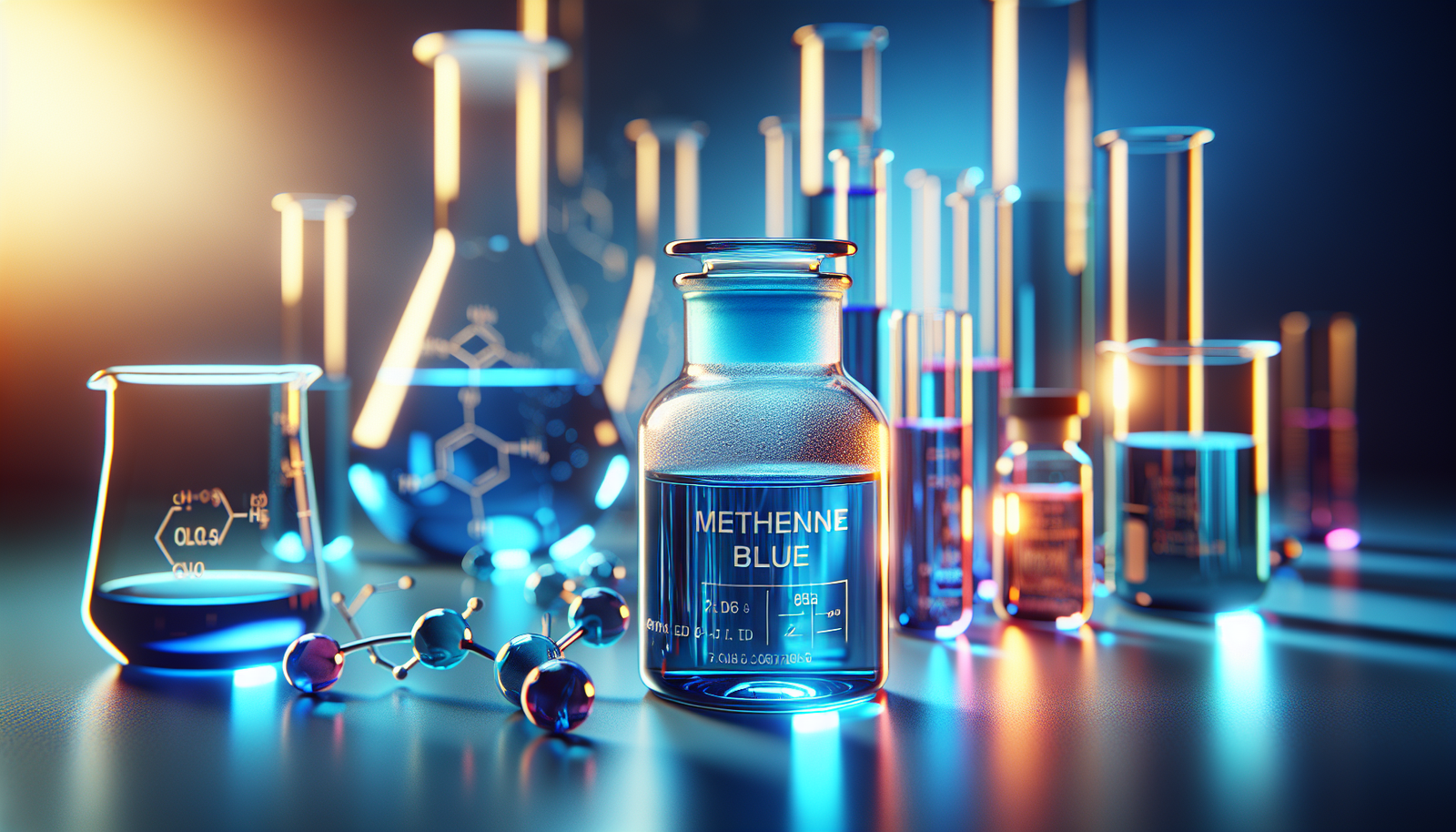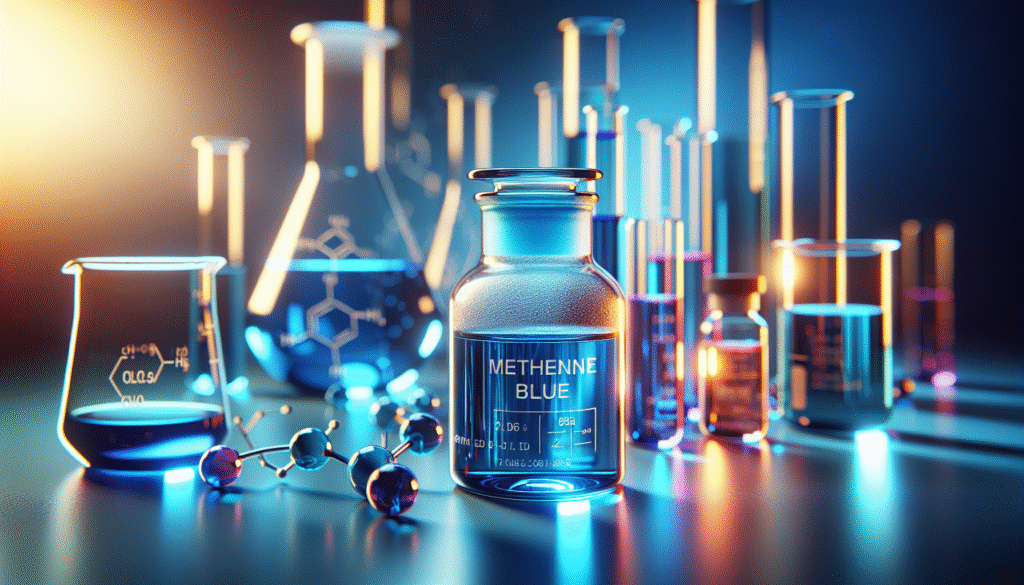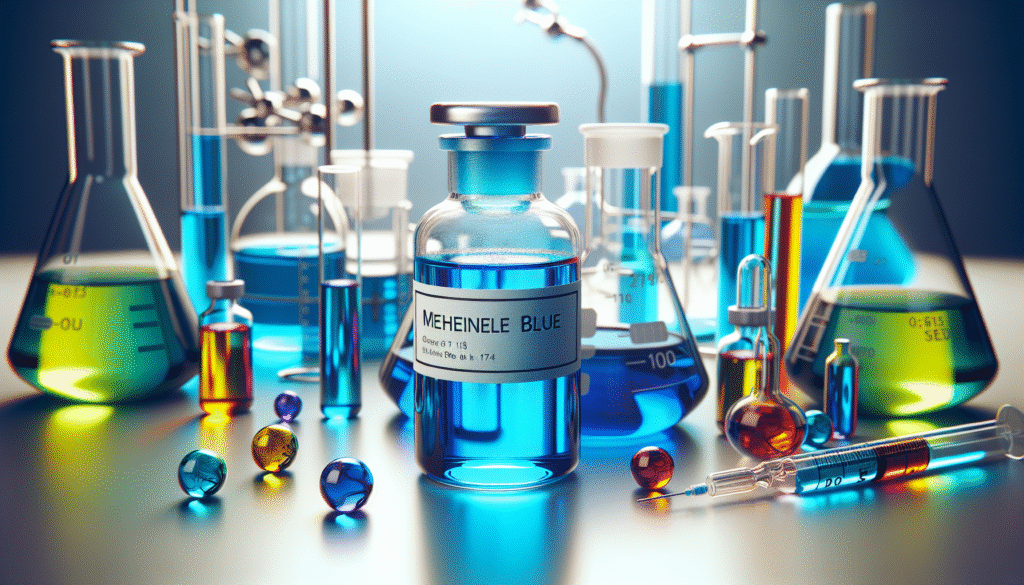
What is the significance of Methylene Blue in redox reactions, and how can understanding its role enhance your knowledge in biochemistry?
Introduction to Methylene Blue
Methylene Blue, a synthetic dye with a rich history, is known not only for its color but also for its utility in various scientific fields. Originally employed as a textile dye, it has made significant contributions to biology, medicine, and chemistry. As you navigate the complex world of redox reactions, comprehending the role of Methylene Blue becomes crucial.
You will find that Methylene Blue operates as a redox indicator, a substance that undergoes a color change when it transitions between oxidized and reduced forms. This property makes it invaluable in scientific research and clinical applications.
The Chemistry Behind Methylene Blue
Before delving into its role in redox reactions, it is crucial to understand what Methylene Blue is on a molecular level. The chemical formula of Methylene Blue is C16H18ClN3S, and its structure consists of a thiazine ring, which contributes significantly to its electrochemical properties.
The redox behavior of Methylene Blue is mainly attributed to the ability of its molecule to exist in multiple oxidation states. Understanding this behavior opens the door to grasping its complex role in redox reactions.
Redox Reactions: A Brief Overview
Redox, short for reduction-oxidation, describes the transfer of electrons between two species. In a redox reaction, one element undergoes oxidation (loses electrons), while another undergoes reduction (gains electrons).
What Makes Redox Reactions Essential?
Redox reactions are foundational processes that underpin various biological and chemical systems. They play a key role in cellular respiration, photosynthesis, and numerous industrial processes. Essentially, redox reactions are integral to energy transfer and conversion within living organisms.
To contextualize Methylene Blue’s role in redox reactions, consider the following table demonstrating common examples:
| Process | Oxidation Reaction | Reduction Reaction |
|---|---|---|
| Cellular Respiration | Glucose → CO2 | O2 → H2O |
| Photosynthesis | H2O → O2 | CO2 → Glucose |
| Industrial Processes | Metals → Metal Ions | Metal Ions → Metals |

The Role of Methylene Blue in Biological Systems
Cellular Respiration and Methylene Blue
In biochemical environments, Methylene Blue functions as a redox mediator. Research has demonstrated its capability to facilitate electron transfer reactions during cellular respiration. You will find that Methylene Blue can accept electrons from enzymes involved in the electron transport chain, effectively participating in availing energy for cellular processes.
Specifically, Methylene Blue can reduce from its oxidized form to a leuco derivative, which is colorless. This transformation illustrates its participation in the electron transfer process, thereby serving as an indicator of metabolic activity.
Antimicrobial Properties
Aside from its chemical properties, Methylene Blue has garnered attention for its antimicrobial effects. When it permeates bacterial cells, it can disrupt cellular processes, including electron transport, leading to bacterial death. This has prompted research into its applications in treating infections, particularly in scenarios involving antibiotic resistance.
Applications of Methylene Blue in Research
Diagnostic Tool in Redox Reactions
Methylene Blue’s coloring properties make it an excellent visual indicator for redox reactions. In laboratory settings, it can signal the progression of chemical reactions through observable changes in color. For example, as Methylene Blue is reduced, it transitions from blue to colorless, making it a straightforward way to monitor the extent of reactions.
Photodynamic Therapy
One of the exciting applications of Methylene Blue lies in photodynamic therapy (PDT), a treatment defined by the interaction of light and photosensitizers to produce reactive oxygen species. Methylene Blue can absorb specific wavelengths of light, which leads to the generation of singlet oxygen and other reactive species.
Here is how the process works:
- Administration of Methylene Blue: The dye is administered to the targeted area, often in the presence of light-sensitive tumors.
- Activation by Light: Upon exposure to light, Methylene Blue becomes excited and transfers energy to nearby oxygen molecules.
- Production of Reactive Oxygen Species: This energy transfer leads to the formation of cytotoxic species that can induce apoptosis in cancer cells.
This mechanism illustrates Methylene Blue’s dual role as both a redox participant and a therapeutic agent.

Mechanistic Insights into Methylene Blue’s Redox Behavior
Electrochemical Properties
Understanding Methylene Blue’s electrochemical properties is essential for grasping its behavior in biochemical systems. The half-reaction representing its reduction can be simplified as follows:
[ \text^+ + e^- \leftrightarrow \text^0 ]
In this equation, Methylene Blue in its oxidized form (MB+) accepts an electron to become its reduced form (MB^0). This reaction highlights the specific conditions under which Methylene Blue can serve as a mediator in electron transfer reactions.
Potential Applications in Understanding Metabolic Pathways
Methylene Blue has shown promise as a tool for investigating metabolic pathways, particularly in its ability to monitor the dynamic changes in redox states within cells. Researchers utilize Methylene Blue to analyze how specific pathways are affected under various physiological conditions.
Therapeutic Applications of Methylene Blue
Treatment of Methemoglobinemia
One of the clinical applications of Methylene Blue is in treating methemoglobinemia, a condition characterized by the presence of methemoglobin, an altered form of hemoglobin that cannot effectively bind oxygen. Methylene Blue acts as a reducing agent, converting methemoglobin back to hemoglobin, thereby restoring its oxygen-carrying capacity.
Investigative Research in Neurodegenerative Disorders
Recent studies have focused on Methylene Blue’s neuroprotective properties. In neurodegenerative diseases like Alzheimer’s and Parkinson’s, oxidative stress plays a pivotal role in cellular damage. Methylene Blue’s ability to mediate redox reactions offers a promising avenue for therapeutic intervention, further necessitating comprehensive research.
Mechanisms of Action in Methylene Blue
Interaction with Mitochondrial Dysfunction
Given Methylene Blue’s function as a redox mediator, its effect on mitochondrial function is of particular interest. Research indicates that Methylene Blue can enhance mitochondrial respiration, providing additional pathways for energy production. This property could pave the way for treatments that address mitochondrial dysfunction, which is central to various chronic diseases.
Role in Electron Transport Chain (ETC)
In the context of the electron transport chain, Methylene Blue has shown the capacity to bypass damaged complexes, effectively shuttling electrons to oxygen to facilitate ATP production. This unique characteristic makes it a compelling candidate for further investigation in therapeutic scenarios where mitochondrial impairment is evident.
Conclusion
Understanding the role of Methylene Blue in redox reactions is multifaceted and rich with implications for both scientific research and clinical applications. From its basic chemistry to its dual role as a redox mediator and therapeutic agent, Methylene Blue offers insights into the intricacies of biochemistry.
Its applications extend beyond laboratory use into clinical settings, such as treating methemoglobinemia and potentially serving neuroprotective roles in various degenerative diseases. Methylene Blue embodies the intersection of chemistry and medicine, paving the way for innovative treatments influenced by its redox behavior.
As you reflect on the importance of Methylene Blue, consider the broader implications of redox reactions in biological systems. Your understanding of these interactions helps establish a more comprehensive view of both biochemical processes and potential therapeutic advancements.